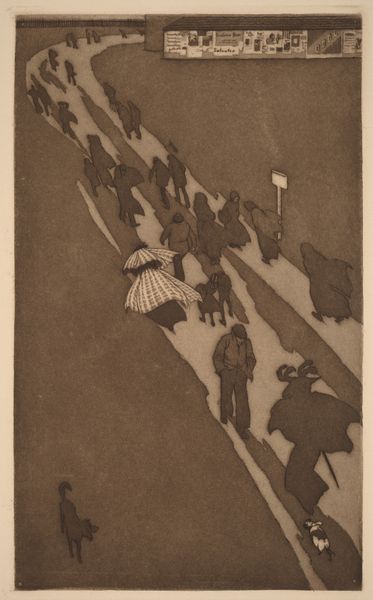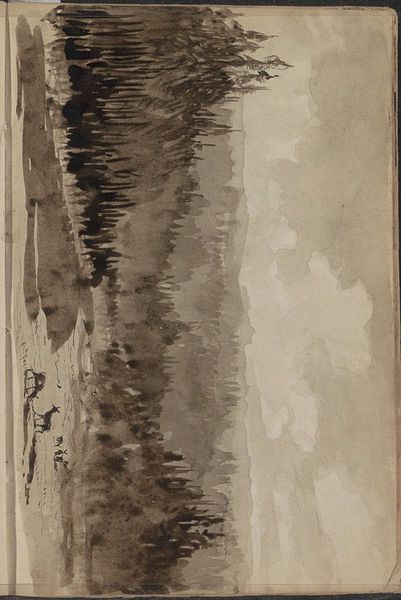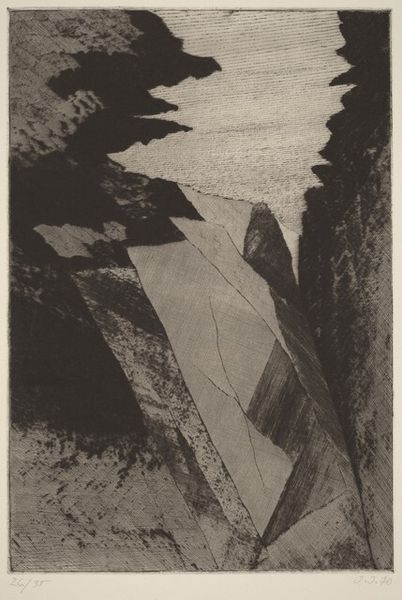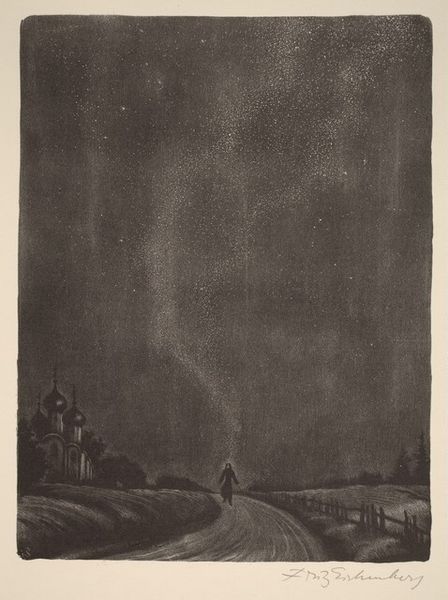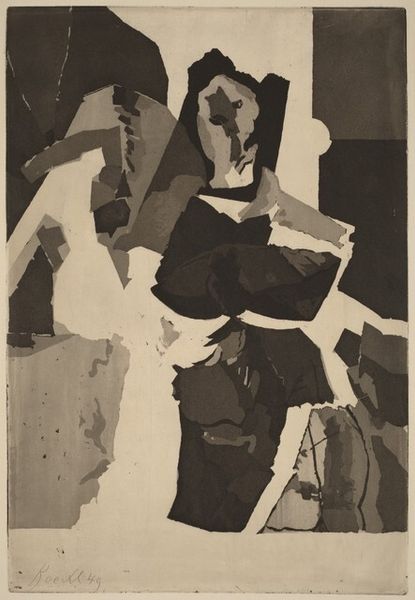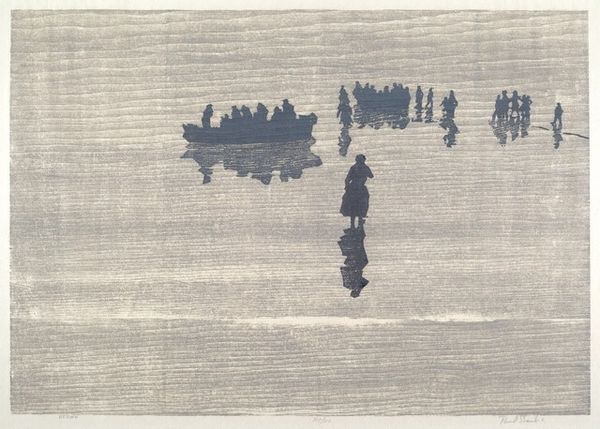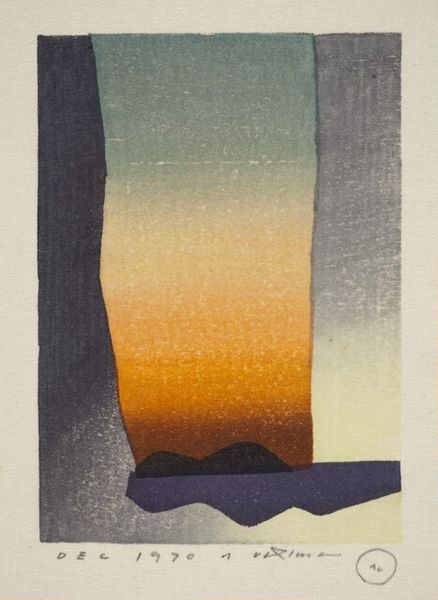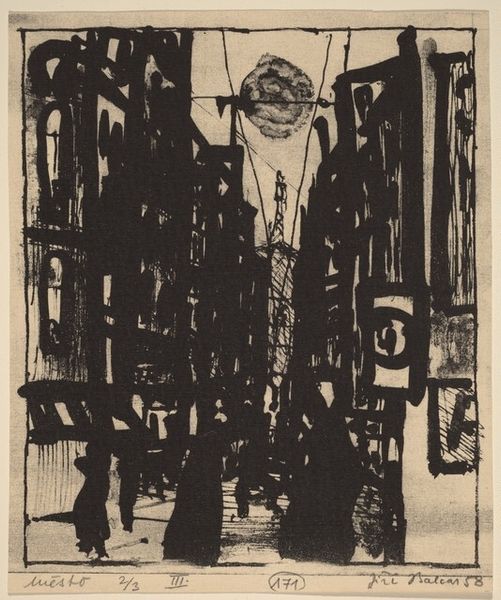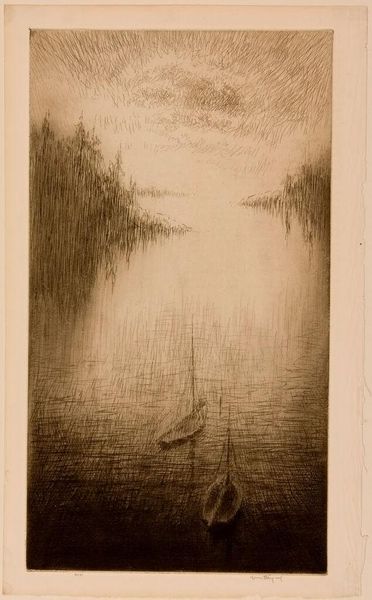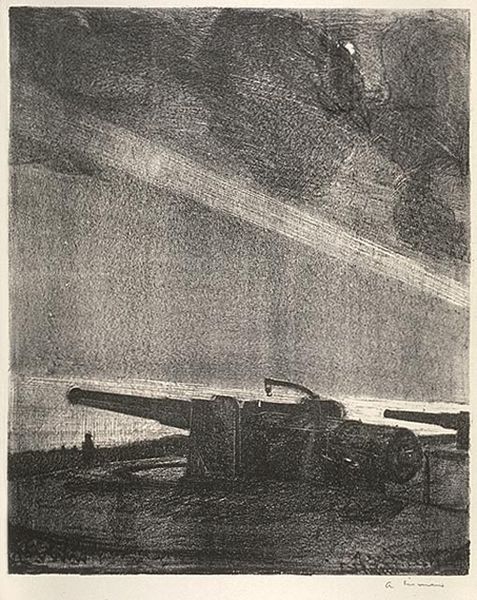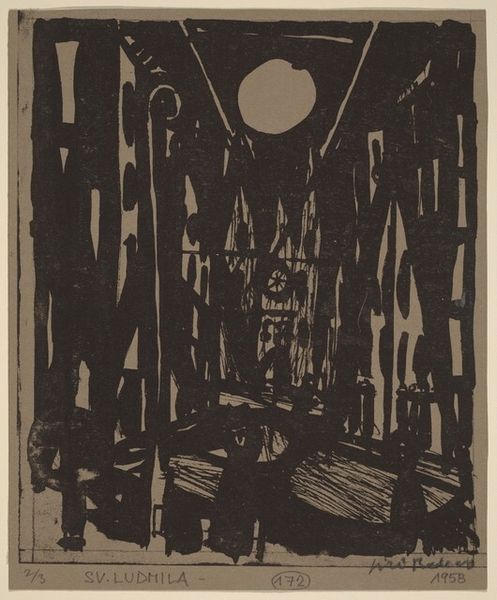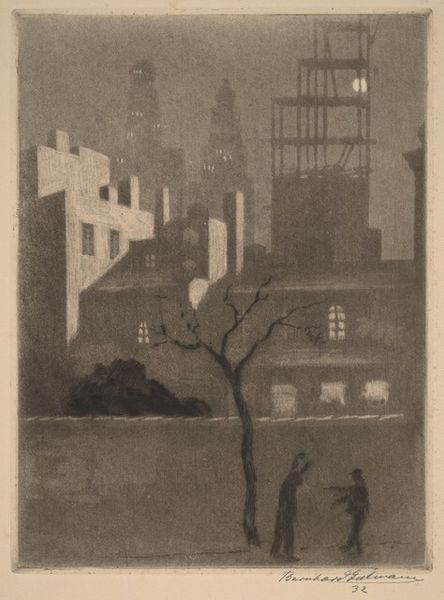
drawing, print, etching
#
art-deco
#
drawing
# print
#
etching
#
landscape
Copyright: National Gallery of Art: CC0 1.0
Editor: So this etching by James Blanding Sloan, "Genesis, The Cliff Dweller," from around 1920, really evokes a sense of monumental solitude. The massive cliff and single cloud dominate the composition. What kind of context informs your understanding of it? Curator: It’s fascinating how Sloan engages with the visual language of Art Deco in a landscape, isn't it? We have to think about what the cliff could symbolize in the public imagination of the 1920s. Was it a symbol of nature's indifference? Or maybe it reflected a post-war yearning for permanence and stability. The print medium is critical here as well – it allowed wider circulation, reaching audiences beyond the traditional art market. Did that affect the reading? Editor: I hadn’t thought about it like that! I was just focused on how imposing it felt. How does its style speak to its era, socially? Curator: Well, think about Art Deco as a style born from industrial advancements, embracing modernity while also drawing inspiration from ancient cultures. The etching mimics both naturalism and industrial processes, creating interesting cultural commentary in public spaces such as galleries or civic buildings. Could this scene offer viewers of that time some kind of escape from their changing industrial environments? Or was it simply just art, displayed on the walls of a collector's house? Editor: That makes me rethink my initial reaction. It’s not just a solitary scene; it reflects how people perceived their place in this new industrial world! Thanks, that's given me a lot to consider about Sloan's print. Curator: And considering the history enriches how we see the aesthetic choices too! Art is so interesting when it's placed into the greater scope.
Comments
No comments
Be the first to comment and join the conversation on the ultimate creative platform.

